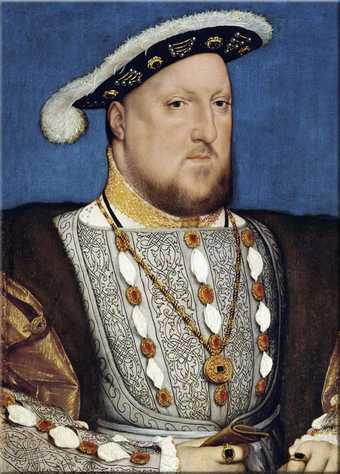
Hans Holbein the Younger Henry VIII
Hans Holbein (1497/8–1543) was the first great British artist, and is regarded as one of the greatest artists of all time. He moved to England from Basel in 1526–8 and then again in 1532–43, an extremely turbulent time in English history when all around were losing their heads. His arrival effectively brought the Renaissance in painting from continental Europe to Britain. This major exhibition, which includes numerous remarkable loans from around the world, concentrates on the work Holbein produced in England under the patronage of the Tudor court and for King Henry VIII. Through an outstanding collection of paintings brought together from around the world, this exhibition documents the thrill of the court and life in Tudor England, reflecting the unsettled history and politics of the time.
This is the largest and most important collection of Holbein’s work to be seen in Britain in over fifty years and shows the range of his extraordinary skill and accomplishment as an artist, as well as his impact on English cultural life. Part of the exhibition looks at the reign of Henry VIII and reunites for the first time in centuries the outstanding portraits of Henry VIII from the Thyssen-Bornemisza Museum in Madrid with the portrait of his third wife Jane Seymour, from the Kunsthistorisches Museum in Vienna, and their son Edward, Prince of Wales, from the National Gallery of Art, Washington.
Bringing together forty portrait and subject paintings as well as portrait drawings, decorative designs and prints, Holbein in England not only demonstrates the range of Holbein’s extraordinary skill and accomplishment as an artist, but will also reassess the impact of his presence on English cultural life in the reign of Henry VIII.
Holbein in England concentrates on the artist’s two periods working in London: 1526–8 and 1532–43. For the first three years Holbein was working under the patronage of Sir Thomas More, a friend and admirer of Holbein’s previous patron in Basel, the important Humanist scholar Erasmus. He left London in 1528 for Basel but returned in 1532 and stayed until his death in 1543. During this latter period Holbein is best known for his portraits of King Henry VIII, the artist’s patron from about 1535–43.
Structured both chronologically and thematically, a section of the exhibition will be dedicated to the images of the king and his family. Other sections will look at members of the royal court and examine the revival of intellectual learning of secular Humanism, the turmoil of religion and the Reformation.
Throughout, the exhibition will investigate the development of Holbein’s portraiture and the relationship of its differing forms to the various groups of patrons for whom he worked. It examines his work for the Protestant Reformation in relation to traditional religious beliefs and explores how he used his own portrait drawings and paintings, as well as other sources including sculpture, to develop a finely-poised balance between individualised character and ideal presentation. Finally the exhibition will highlight the artist’s contribution to the revolution in English decorative design, examining the ways in which his sophisticated understanding of the new classical decorative vocabulary was applied to designs for goldsmiths as well as to large-scale paintings.
Tate is fortunate enough to have secured many major loans for this exhibition including the prime portrait of Henry VIII by Holbein from the Thyssen-Bornemisza Museum in Madrid. This is re-united for the first time in centuries with the portraits of Henry VIII’s third wife Jane Seymour, lent from the Kunsthistorisches Museum in Vienna, and his son Edward, Prince of Wales, from the National Gallery of Art, Washington. Many other loans come from the Windsor Castle and the Royal Collection and major European collections, many being lent for the first time in living memory.


